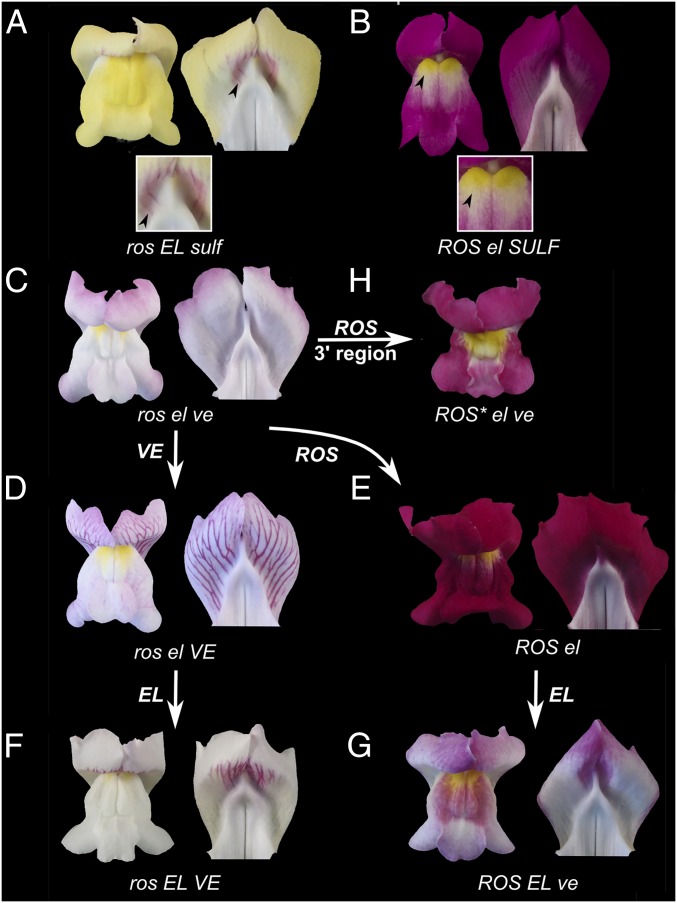Fig. 1.
Genetics of flower color. Flowers of A.m.striatum (A, ross/ross ELs/ELs sulfs/sulfs) and A.m.pseudomajus (B, ROSp/ROSp elp/elp SULFp/SULFp). Each panel shows face view (Left), inside of dorsal petals (Right), and closeup (Bottom). Arrowheads highlight dorsal (A) and ventral (B) patterns. (C–G) Progeny of crosses between plants from the hybrid zone and lines of A. majus, illustrating phenotype of various allele combinations. All are SULFm/- or SULFp/-. (C) ross/rosd elp/elm ve/ve gives a flower with pale magenta color on petal periphery. (D) ross/ross elp/elp VE/- has flowers with magenta veins because of VE. (E) ROSp/ROSp elp/elp gives strong magenta throughout the flower due to ROS allele (venosa genotype unknown). (F) ross/ross ELs/ELs VE/- has vein pigment restricted to a central region. (G) ROSp/ROSp ELs/ELs ve/ve giving a restricted pattern of pigmentation compared with E. (H) ROS*/ROS* elp/elp ve/ve have spread magenta but of weaker intensity than conferred by ROS (compare with E). Allele superscripts and abbreviations used in figure legend: *, recombinant; d, dorsea (mutant in A. majus background); m, majus; p, A.m.pseudomajus; s, A.m.striatum; X/-, unknown whether homozygous or heterozygous for dominant allele X.

